Emphasis on Product Type (Handheld and Desktop); End User (Academic & Research Institutes; Pharmaceuticals & Biotechnology Companies; and Others) and Region/Country
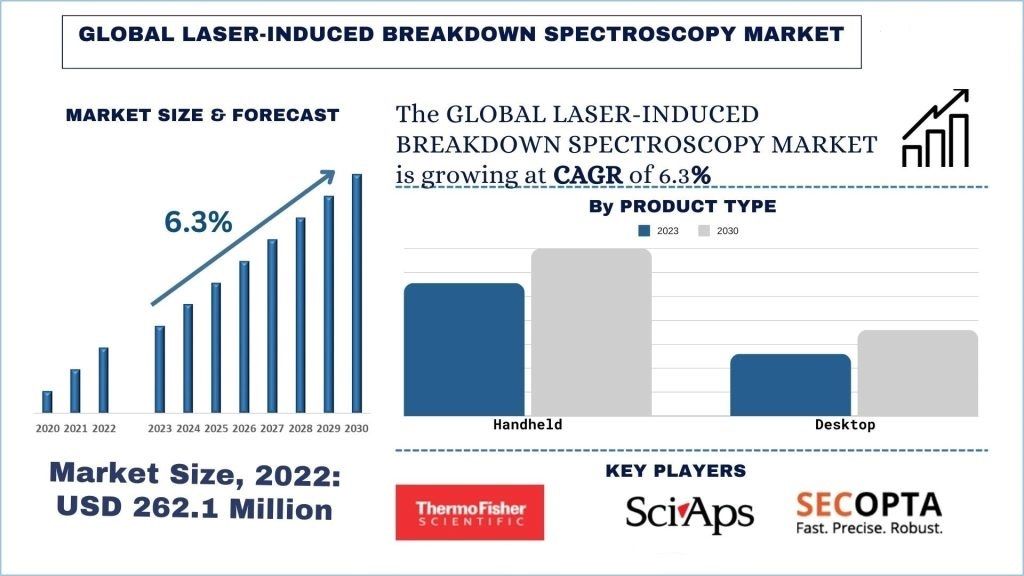
The Laser-Induced Breakdown Spectroscopy Market was valued at USD 262.1 Million in 2022 and is expected to grow at a strong CAGR of around 6.3% during the forecast period (2023-2030) owing to the rising technological advances concerning laser-induced breakdown spectroscopy.
The Laser-Induced Breakdown Spectroscopy Market is escalating due to several reasons including the rise in research & development activities, rising strategic collaborations, and increasing technological advancements. The integration of artificial intelligence with laser-induced breakdown spectroscopy is also driving the growth of the market.
According to Statistics Canada, chronic diseases like, cancer and heart disease remained the two leading causes of death in Canada, accounting for 41.8% of deaths in 2022. In 2021, these diseases account for 44.3% of all deaths.
Moreover, in 2022, Agrorobótica launched the artificial intelligence platform AGLIBS (Laser Induced Breakdown Spectroscopy), which allows carbon certification in agricultural areas through the quantification of soil organic carbon supplies that result from the implementation of management practices in the agricultural area. Such technological advancements are driving the growth of the market during the forecast period.
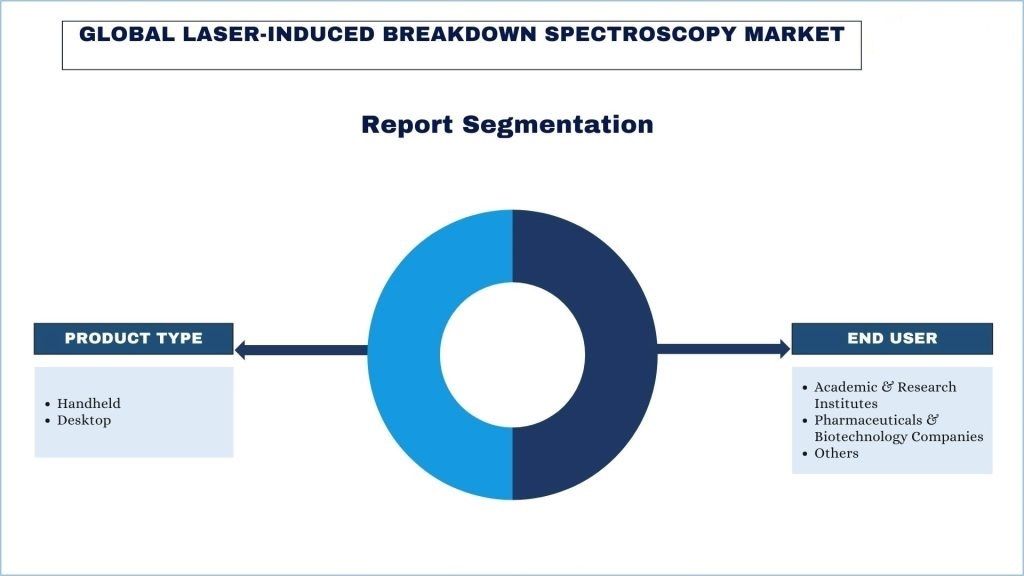
This section discusses the key market trends that are influencing the various segments of the laser-induced breakdown spectroscopy market as identified by our team of research experts.
Academic & Research Institutes Transforming Industry Standards
The academic & research institutes segment in the laser-induced breakdown spectroscopy (LIBS) market has been experiencing significant growth mainly due to increased focus on research and development across various scientific disciplines which has spurred demand for advanced analytical techniques like laser-induced breakdown spectroscopy in academic and research institutions. LIBS technology’s versatility makes it attractive for interdisciplinary research projects, leading to collaborations between different departments and institutions, further driving its adoption. Academic institutions play a crucial role in training the next generation of scientists and engineers. Integration of LIBS into educational curriculum and research programs enhances students’ skills and knowledge in analytical spectroscopy and laser physics. Therefore, the academic and research institutes segment is expected to continue growing in the LIBS market as these institutions drive innovation, knowledge dissemination, and collaboration, shaping the future development and adoption of LIBS technology across various scientific fields. For instance, in November 2023, the Foundation for Research and Technology -Hellas, published a paper on the application of laser-induced breakdown spectroscopy (LIBS) and elemental imaging on marine shells for archaeological and environmental research.
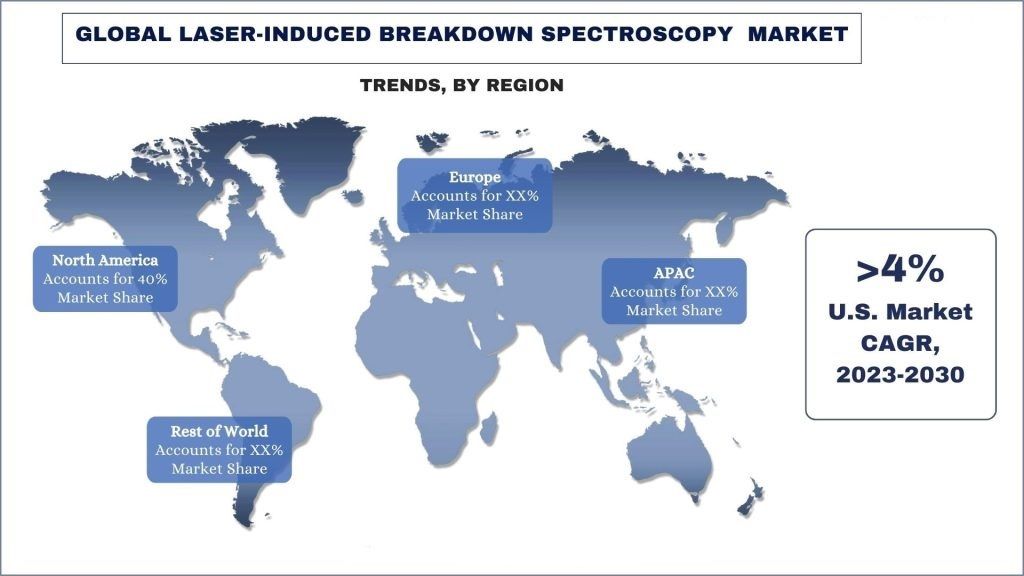
North America is Expected to Grow with Significant CAGR During Forecast Period
Within North America, the U.S. holds a major share of the market. The major factors boosting the market’s growth in the country are the increasing number of chronic disease cases like cancer and osteoporosis, rising technological advancements, growing research and development activities, and the presence of several market players.
According to a government source, the Centers for Disease Control and Prevention (CDC), it is estimated that 6 out of 10 adults in the US have a chronic disease. This statistic emphasizes the sheer magnitude of the population in need of laser-induced breakdown spectroscopy and highlights the potential market demand.
According to the Journal of Orthopaedic Surgery and Research, the prevalence of osteoporosis in the spine or hip was reported at 21% in the U.S. in the year 2021.
The laser-induced breakdown spectroscopy market is competitive, with the presence of several global and international market players. The key players are adopting different growth strategies to enhance their market presence, such as partnerships, agreements, collaborations, new product launches, geographical expansions, and mergers and acquisitions. Some of the major players operating in the market are Thermo Fisher Scientific Inc.; Hitachi High-Tech Analytical Science; SciAps, Inc.; Rigaku, Bruker Corporation; TSI; Princeton Instruments; Avantes; B&W Tek; Applied Spectra; SECOPTA analytics GmbH.
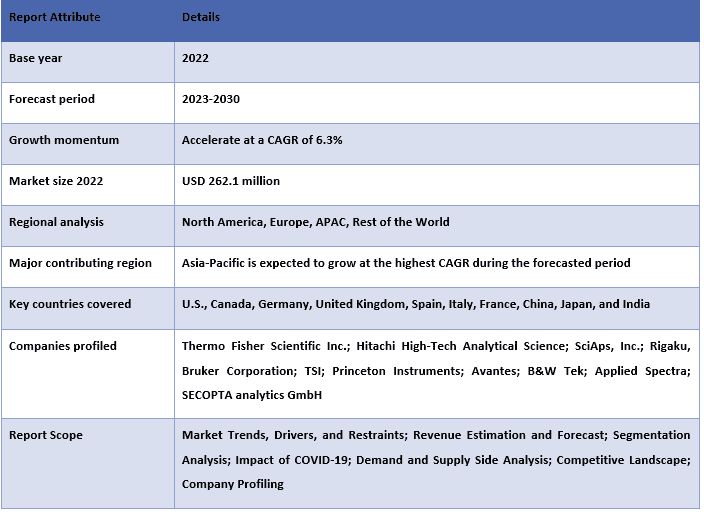
Reasons to buy this report:
Customization Options:
The global laser-induced breakdown spectroscopy market can further be customized as per the requirement or any other market segment. Besides this, UMI understands that you may have your own business needs, hence feel free to connect with us to get a report that completely suits your requirements.
1. Market Introduction
2. Research Methodology Or Assumption
3. Market Synopsis
4. Executive Summary
5. Impact Of Covid-19 On The Laser-induced Breakdown Spectroscopy Market
6. Laser-induced Breakdown Spectroscopy Market Revenue (usd Bn), 2020-2030f
7. Market Insights By Product Type
8. Market Insights By End User
9. Market Insights By Region
10. Laser-induced Breakdown Spectroscopy Market Dynamics
11. Laser-induced Breakdown Spectroscopy Market Opportunities
12. Laser-induced Breakdown Spectroscopy Market Trends
13. Demand And Supply-side Analysis
14. Value Chain Analysis
15. Competitive Scenario
16. Company Profiled
17. Disclaimer
Analyzing the historical market, estimating the current market, and forecasting the future market of the global laser-induced breakdown spectroscopy market were the three major steps undertaken to create and analyze the adoption of laser-induced breakdown spectroscopy in major regions globally. Exhaustive secondary research was conducted to collect the historical market numbers and estimate the current market size. Secondly, to validate these insights, numerous findings and assumptions were taken into consideration. Moreover, exhaustive primary interviews were also conducted, with industry experts across the value chain of the global laser-induced breakdown spectroscopy market. Post assumption and validation of market numbers through primary interviews, we employed a top-down/bottom-up approach to forecasting the complete market size. Thereafter, market breakdown and data triangulation methods were adopted to estimate and analyze the market size of segments and sub-segments of the industry pertains to. Detailed methodology is explained below:
Step 1: In-Depth Study of Secondary Sources:
Detail secondary study was conducted to obtain the historical market size of the laser-induced breakdown spectroscopy market through company internal sources such as annual reports & financial statements, performance presentations, press releases, etc., and external sources including journals, news & articles, government publications, competitor publications, sector reports, third-party database, and other credible publications.
Step 2: Market Segmentation:
After obtaining the historical market size of the laser-induced breakdown spectroscopy market, we conducted a detailed secondary analysis to gather historical market insights and share for different segments & sub-segments for major regions. Major segments are included in the report as product type, end user, and region. Further country-level analyses were conducted to evaluate the overall adoption of testing models in that region.
Step 3: Factor Analysis:
After acquiring the historical market size of different segments and sub-segments, we conducted a detailed factor analysis to estimate the current market size of the laser-induced breakdown spectroscopy market. Further, we conducted factor analysis using dependent and independent variables such as product type, end user, and region of the laser-induced breakdown spectroscopy market. A thorough analysis was conducted for demand and supply-side scenarios considering top partnerships, mergers and acquisitions, business expansion, and product launches in the laser-induced breakdown spectroscopy market sector across the globe.
Current Market Sizing: Based on actionable insights from the above 3 steps, we arrived at the current market size, key players in the global laser-induced breakdown spectroscopy market, and market shares of the segments. All the required percentage shares split, and market breakdowns were determined using the above-mentioned secondary approach and were verified through primary interviews.
Estimation & Forecasting: For market estimation and forecast, weights were assigned to different factors including drivers & trends, restraints, and opportunities available for the stakeholders. After analyzing these factors, relevant forecasting techniques i.e., the top-down/bottom-up approach were applied to arrive at the market forecast for 2030 for different segments and sub-segments across the major markets globally. The research methodology adopted to estimate the market size encompasses:
Primary Research: In-depth interviews were conducted with the Key Opinion Leaders (KOLs) including Top Level Executives (CXO/VPs, Sales Head, Marketing Head, Operational Head, Regional Head, Country Head, etc.) across major regions. Primary research findings were then summarized, and statistical analysis was performed to prove the stated hypothesis. Inputs from primary research were consolidated with secondary findings, hence turning information into actionable insights.
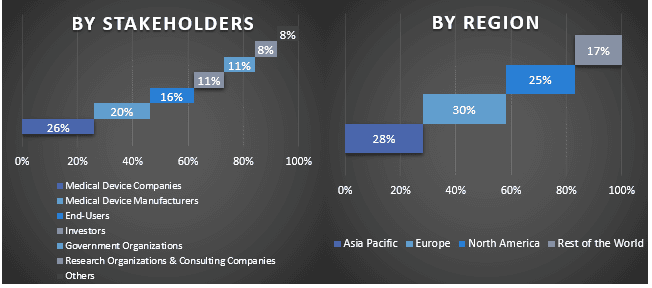
Market Engineering
The data triangulation technique was employed to complete the overall market estimation and to arrive at precise statistical numbers for each segment and sub-segment of the global laser-induced breakdown spectroscopy market. data was split into several segments & sub-segments post studying various parameters and trends in the areas of the product type, end user, and region in the global laser-induced breakdown spectroscopy market.
The current & future market trends of the global laser-induced breakdown spectroscopy market were pinpointed in the study. Investors can gain strategic insights to base their discretion for investments on the qualitative and quantitative analysis performed in the study. Current and future market trends determined the overall attractiveness of the market at a regional level, providing a platform for the industrial participant to exploit the untapped market to benefit from a first-mover advantage. Other quantitative goals of the studies include:
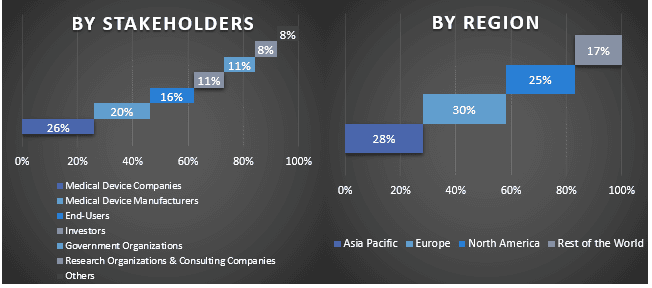
Q1: What is the current market size and growth potential of the laser-induced breakdown spectroscopy market?
Q2: What are the driving factors for the growth of the laser-induced breakdown spectroscopy market?
Q3: Which segment has the largest share of the laser-induced breakdown spectroscopy market by product type?
Q4: What are the emerging technologies and trends in the laser-induced breakdown spectroscopy market?
Q5: Which region will dominate the laser-induced breakdown spectroscopy market?
Customers who bought this item also bought